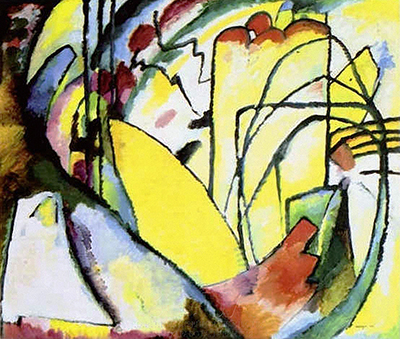This painting is an abstract piece from Wassily Kandinsky which is dated to 1910 and is now a part of the collection of the Beyeler Foundation in Basel.
Here we find a large use of yellow across the scene, giving a bright finish. Small tips of reds appear highly significant to the composition, but it is hard to decipher their precise representation, if any. Dark lines are used throughout to create form and this also helps to balance out the bright colours. Shapes are added in a haphazard manner, and one is left attempting to suggest rather than confirm the identity of the different shapes and lines found here.
The artist gave us three series which were all named in a simple, numbered order. This painting, naturally, was a part of his improvised series, whilst there were also a number that he placed in the categories of compositions and impressions. The different categories offered a different balance between painting from reality or instead drawing inspiration from one's own mind. He was interested to experiment with these comparisons and visually display differences through this body of work. Kandinsky later became a writer who produced several publications around the theory of art and this would be a part of his early research into that. It is sensible to compare the different categories to examine how different sources of inspiration would produce varying styles of form.
The disconnect from traditional art has often led to wild, chaotic scenes where the structure taught for centuries is replaced by an open canvas where expression becomes the priority. This leads to paintings which are exciting in many ways, but also hard to summarise and explain. One perhaps should consider this all the be a necessary part of the process towards appreciating full expression within art, and allowing creative people to be completely unrestrained. Previously, artists would always be compared to what had gone before, with a high level of conformity placed upon them. Kandinsky's improvisation series helped to break that mould in the early 20th century.




